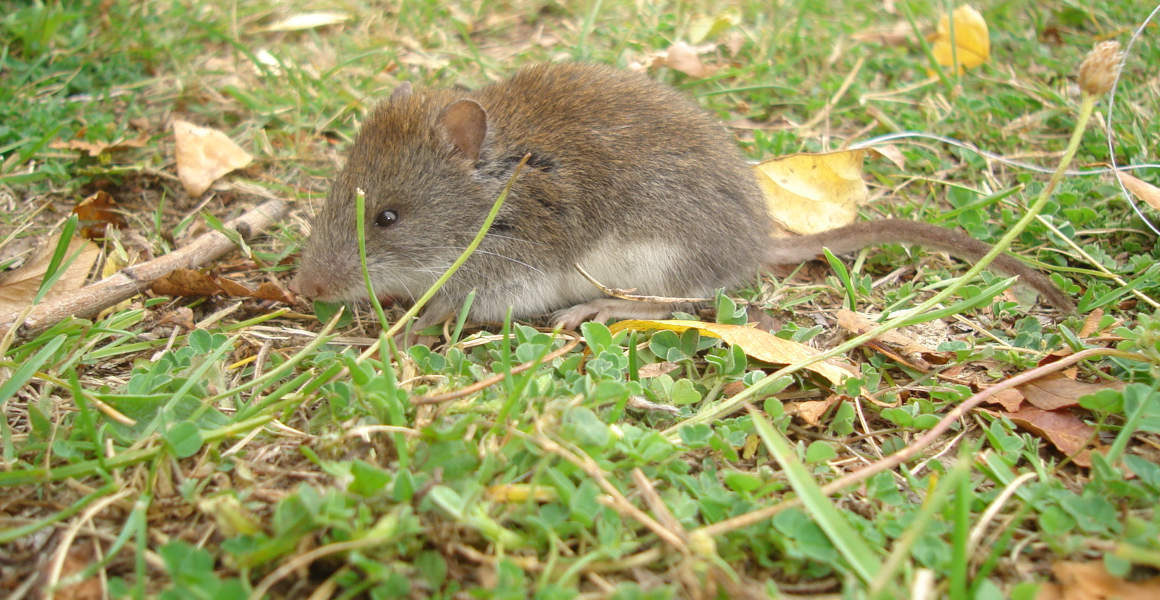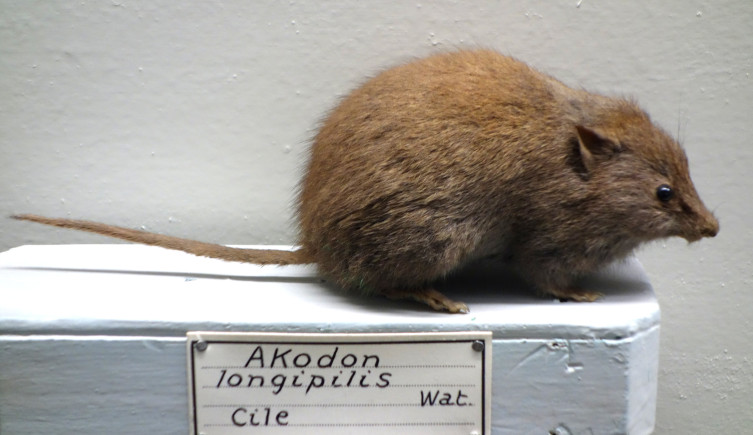Andean mice grow differently depending on what side of the mountain they come from.
Animals living on the wetter side of peaks may grow much bigger than their drier relatives, even though they're still the same species.

The rodent Abrothrix hirta was found to grow larger on wetter sides of the Andes. Image © Pablo Teta
Andean mice grow differently depending on what side of the mountain they come from.
Animals living on the wetter side of peaks may grow much bigger than their drier relatives, even though they're still the same species.
It may not just be raining cats and dogs in the Patagonian Andes – the rain may also be causing bigger mice.
Scientists using mouse specimens from US, Chilean and Argentinian museums found that the shaggy soft-haired mice, Abrothrix hirta, grow bigger on the western slopes of the mountains than on the eastern sides.
The researchers have proposed that these size differences are linked to the rain shadow effect, where humid air rising up one side of a mountain gradually loses all of its moisture before it reaches the peak, leaving the other side in the rain's 'shadow'.
Professor Noé de la Sancha, who co-authored a study of the mice published in the Journal of Biogeography, says that this difference in rainfall could provide more food on the western slopes, allowing the mice found here to grow bigger.
'There is a rain shadow effect in most mountains on the planet and we see this phenomenon all over the world,' Noé says. 'One side of the mountain will be humid and rainy, and the other will have cold, dry air.'
'On some mountains, the difference is extreme, leaving one face like a tropical rainforest, and the other almost desert-like. This could be more of a rule of nature than an anomaly, but we'd need to test it on lots of different taxa to show that.'

For many years Abrothrix hirta was considered to be the same species as Abrothrix longipilis until reassessment in the 2010s. Image © Daderot, licensed under Public Domain via Wikimedia Commons.
Abrothrix is a genus of South American mice which live across a variety of environments, including mountainous regions and islands. Beyond their own ecosystem roles, they act as an important reservoir for the Andes virus, which can have serious consequences when passed on to humans.
Despite their status as a disease reservoir, the mice are not well understood as a group. They were formally considered part of a much larger group of rats until 2007, when they were moved into a smaller clade.
This is complicated by the uncertainty associated with the number of Abrothrix species, as they may represent what is known as a species complex. This is a group of closely related organisms that appear almost identical and may only be told apart at a genetic or molecular level.
Species complexes can sometimes explain why one species appears to have a large distribution over a varied area, as it may actually represent multiple species inhabiting different habitat types.
One species complex is Abrothrix longipilis, which has been the subject of scientific debate over decades as species have been split from it and merged back in. For example, A. hirta was initially described in 1895 as a distinct species, only to later be merged back into this complex, before finally being resurrected again as its own distinct species.
While A. hirta itself has also been considered as another possible complex due to wide ranges in its shape and size, studies of mitochondrial DNA have shown it is just one species.
But faced with the large variation seen within this species, researchers have tried to find a biological reason for these differences by comparing the size of mouse skulls held in museum collections with different factors such as precipitation and temperature.
The only pattern they could find appeared to be associated with longitude, or how easterly or westerly the rodents were living. After further investigation, this was then linked to the pattern or rainfall on the mountains.

Air loses moisture as it rises and cools while travelling up a mountainside, giving one side significant rainfall and the other in a rain 'shadow'. Image © Samuel Ericksen/Shutterstock
The researchers believe that the overall pattern is linked to the availability of resources. In the case of A. hirta, the wetter western slopes of the Andes allow for more plants to grow, giving the rodents access to more food.
On the drier side of the mountain, lower rainfall limits the body size the mice can support making it more advantageous to remain small.
The researchers believe that this pattern could be observed in other mountain-dwelling species but are yet to test it.
What is certain, however, is that the mice face an uncertain future. Weather patterns will be affected as a result of climate change, which could affect the size pattern of the mice - or wipe them out altogether.
'With climate change, we know we're going to see dramatic changes in temperature throughout the year, and changes in precipitation,' Noé says. 'While they might not be the most important variables affecting the mice's well-being, they are important in determining available food sources.'
'This is important in determining the mice's morphology, either directly or indirectly through the resources they can find.'
Mountain species have also been recorded shifting their ranges ever higher to try and stay within a suitable temperature bracket as the Earth warms. If the bracket moves past the top of the mountain, then the species will need to adapt or face extinction.
The scientists have called for more research into mice and other small mammals to find out more about how they will be affected in the coming decades.
'It's important to understand how little we know about most small mammals,' Noé says. 'They can be good indicators of long-term changes in our environment. We need to study them more.'

We're working towards a future where both people and the planet thrive.
Hear from scientists studying human impact and change in the natural world.
Don't miss a thing
Receive email updates about our news, science, exhibitions, events, products, services and fundraising activities. We may occasionally include third-party content from our corporate partners and other museums. We will not share your personal details with these third parties. You must be over the age of 13. Privacy notice.
Follow us on social media